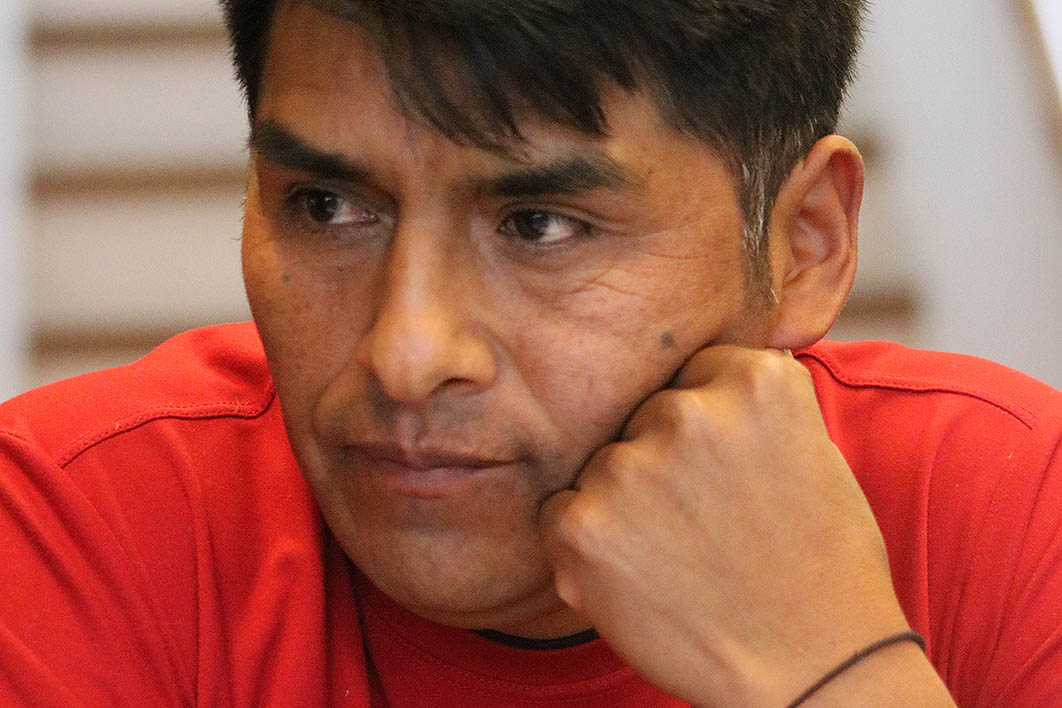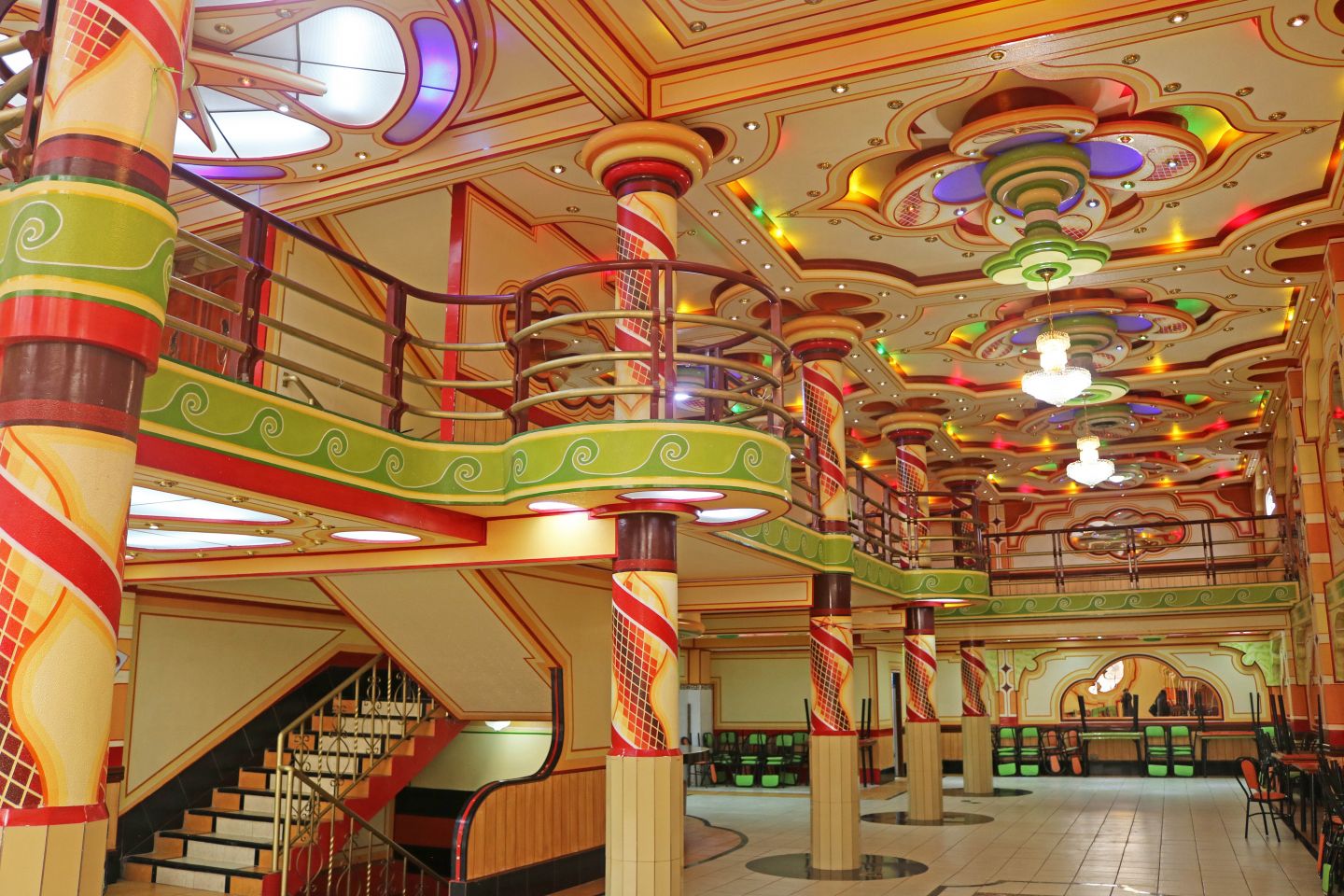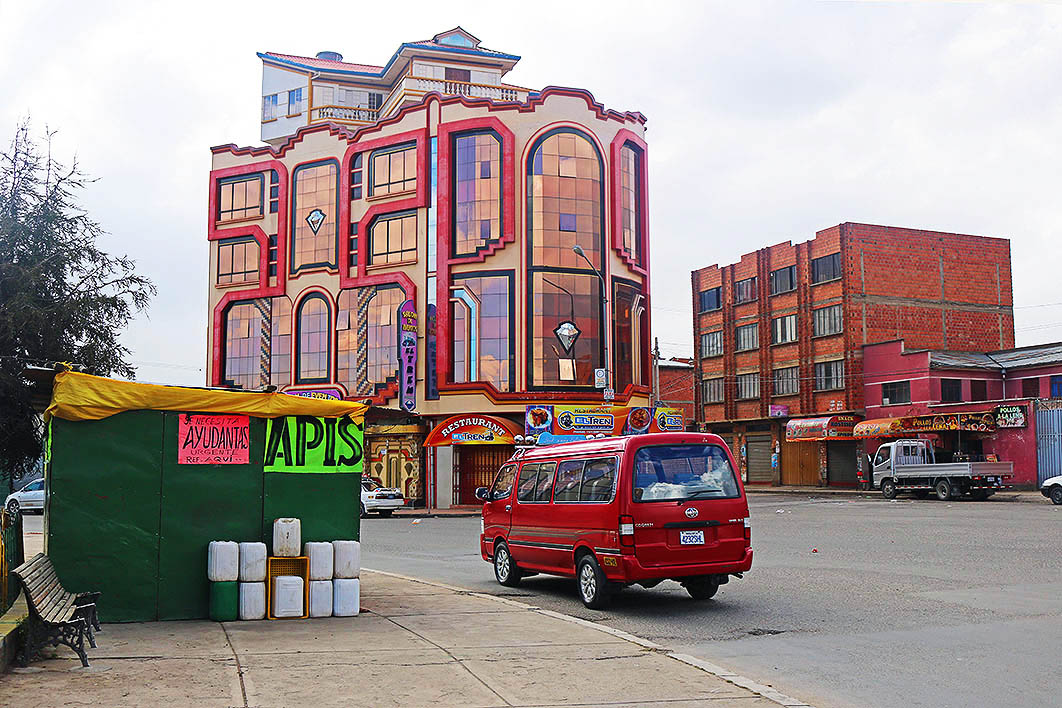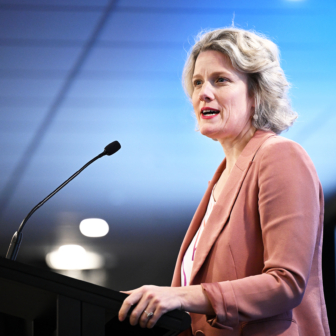El Alto — roughly translated as “the high” — was once a mere limb of La Paz, Bolivia’s capital, sitting more than 4000 metres above sea level on the high Andean plateau. With a population of almost a million, it is now the country’s second-largest city. It is also home to the eye-catching and irreverent buildings that many people call “cholets,” though their creator, Freddy Mamani, doesn’t like that term at all.
“Cholets,” combines “cholos,” the racially charged epithet applied to indigenous Bolivians, with the word “chalets.” Mamani — himself from the Aymara people, one of Bolivia’s largest indigenous groups — finds the term offensive. He prefers to describe his work as “Andean new architecture.”
Mamani’s architecture emerged at around the same time that Evo Morales, an indigenous Aymara former coca grower, was elected Bolivian president in 2006. The country’s indigenous people — historically humiliated and racially abused — occupy a central position in Morales’s political project, and his period in office, which continues to this day, has given the indigenous community a renewed sense of pride.
During those years, Aymara people have migrated to El Alto from rural areas in increasing numbers, engaging in trade and accumulating considerable wealth. “They are transporters, merchants, businesspeople who have transformed El Alto into a space of commercial surpluses, accumulation of wealth and investment,” sociologist Pablo Mamani (no relation to Freddy), from El Alto Public University, tells me. “They are the clients of Freddy,” he says, wealthy enough to pay for the architect’s work, which ranges in price from US$200,000 to US$1 million or more. “These wealthy individuals have become a new Aymara bourgeoisie for whom the architectonic work of Freddy Mamani has become a cultural and economic artefact.”
Or, as the architect himself puts it, “I come from that culture. I know their needs and their experiences.” He is aware he has become a role model for the Aymara society. “I take care how I behave,” he tells me.
Despite his international accolades, the fifty-three-year-old is shy and softly spoken. Back in his hometown of Catavi, in Bolivia’s southwestern tin-mining region of Potosí, his father was a builder and his mother a weaver. As a child, he began his “building education” fashioning mud into small-scale cities, roads, squares and streets. He moved to El Alto when he was fifteen. His career as an architect had its genesis in a period working as a builder’s assistant before he enrolled in civil engineering at the Bolivian University of Informatics.
Mamani’s distinctive style emerged in the early 2000s after a client suggested a building incorporating Aymara symbols. “I thought to start using symbols from the Tiahuanaco culture because I identify myself with this culture, I feel proud of it,” he tells me. As an architecture style, he says, it reflects “a particular lifestyle that seeks to show all its economic power and cultural heritage.”

The Alteños now have an architectural identity, says Freddy Mamani. Antonio Castillo
All of his buildings follow the same logic. The ground floor is commercial, designed to generate income for its owners. The second and third floors are also commercially oriented, and are often rented out as professional offices. Then, on the top floor, the famous “chalet” rises, as close as possible to the hanaq pacha, or upper world, though with practical benefits too. “We make the villas above because of the weather,” Mamani says. “The city of El Alto is cold and we try to take advantage of the light,” as well as the view of the snow-peaked Illimani Mountain. He tells me that the buildings are an “urban version of the adobe rural houses that once hosted the animals on the ground floor.”
For Mamani, “El Alto is the city I’ve grown up in and I’ve seen it growing up.” For many years it had “a very depressing and monotonous image,” and he wanted to “give it life and fill it with colours.” The Alteños — as the people who live in El Alto are known — are “entrepreneurial, inventive, and hard workers.” Now, he says, they have an “architectural identity.”
Eighty per cent of El Alto’s population is Aymara. It is a chaotic and gritty place, its streets largely unpaved and dusty. Criminal activity is high and the homicide rate is above the Latin American average, but it is also one of Bolivia’s industrial and commercial centres. “El Alto is the socioeconomic centre of the Aymara society,” says El Alto Public University’s Pablo Mamani. This commercial drive stemmed from the Aymara’s historical distrust of the Bolivian political elite. “They don’t depend on the state for their subsistence.”
Osvaldo Ticona, one of Freddy Mamani’s clients, is among those who don’t trust the Bolivian political elite. He has accumulated a small fortune making leather shoes, which he and his wife crisscross the country to sell. An Aymara, he and his family moved to El Alto fifteen years ago.
Ticona’s words — like his wealth — are used sparingly. He doesn’t want to tell me how much he spent on his five-storey building, revealing only that it was expensive. “It is the quality of the material I wanted,” he says. “I wanted good iron, you know — good and expensive material.” As soon as he saw one of Freddy Mamani’s buildings, “I wanted one.”
Sitting under a striking ceiling in his building, the Rey Otan Palace on El Alto’s 1st of May Avenue, Ticona tells me it was “an investment for my children and for my old age.” The building’s facade uses stone of different sizes and shades to emulate an Aymara Andean weave. But like most of Mamani’s work, and despite the decoration, it is essentially a “functional” structure. The ground floor is occupied by a general store — “At first we thought to have a restaurant there, but my wife was a bit tired so we opted to open a grocery shop” — and the upper levels are taken up with function rooms. The building is “the envy of the neighbours,” says Ticona. “But you have to be humble.”

Overly decorative? The interior of Osvaldo Ticona’s Mamani-designed Rey Otan Palace. Antonio Castillo
El Alto boasts around 120 of Mamani’s buildings, with a dozen more in the making. (Another sixty projects have been completed elsewhere in Bolivia, and a further twelve — including works in Brazil, Chile and Peru — are on the drawing board.) The largest number can be seen in the Villa Adela area, in the city’s third municipal district. A walk down the Avenida Bolivia, for instance, reveals the extravagant Imperio del Rey (Empire of the King), which belongs to the Quisberth Flores, one of the wealthiest families in El Alto.
“Since I started building there are certain sectors in El Alto that have criticised these buildings,” Mamani tells me. “[They say] that it’s only the elite who has access to my work. I don’t see it that way.” He has also made “low-cost housing of single-floor houses,” he says. He believes that the media in particular has overemphasised the larger and more expensive houses he has built. “Anyone can access my work.”
He looks pleased, and perhaps a bit flustered, when I tell him he is being described informally as “the Andean Gaudí.” He tells me he admires Gaudí — “he has made monumental architecture” — but points out that, unlike the Spaniard, he has never set foot in a university architecture school. Instead, he finds inspiration in the culture and ruins of Tiahuanaco, the ancient indigenous Andean society, creating a style that goes against the conventions of institutionalised architecture. “I rely on the indigenous fabrics and the geometric iconography of these ruins. For me, El Alto is like a modern Tiahuanaco.”
Mamani uses traditional indigenous symbols — the condor, for example — and green and yellow, the colours of prosperity and hope in Andean tradition. His baroque constructions feature straight lines, diagonal arrangements and geometric shapes — such as the chakana, or Andean cross — and incorporate the rich colourful palette of the aguayo, the piece of embroidered cloth that indigenous women wrap around their shoulders and drape down their back to carry anything from babies to shopping.
Surprisingly, he also draws inspiration from the 1980s American television series The Transformers. Or perhaps that’s not so surprising: his buildings certainly evoke those mighty robots able to change themselves into all sorts of shapes.
According to Javier Bedoya, who teaches architecture at the Bolivian San Pablo Catholic University, “Mamani has generated a new mixed housing typology that has no major concern for structural or spatial systems, prioritising simply the exterior image and the interior decoration as a symbolic system.” For Bedoya, Mamani’s work reflects “the semiotic architecture of the sixties and seventies.”

A different tradition: one of Freddy Mamani’s buildings under construction in El Alto. Antonio Castillo
Architectural historian Elisabetta Andreoli describes Mamani’s style as “Neo-Andean.” Mamani, she writes, “does not work with the aesthetics of the Bolivian elite, which is why they consider it picturesque and not very serious. Few understand this trend can be part of the identity of this country.”
Not everybody is impressed by Mamani’s architecture. There are those who reject it because it strikes them as kitsch, or overly decorative. Frederick Cooper, former dean of the architecture school at the Pontifical Catholic University of Peru, says Mamani’s work lacks architectural value and rests on a decorative form, “product of the educational crisis in Bolivia.”
Mamani isn’t bothered by his critics. “For the academia my architecture is somehow iconoclastic and so they don’t accept it,” he says. “I’m fine that I’m not accepted by the establishment as long as the Aymara community accept my work.” Those who criticise him “don’t understand our culture has a different tradition.”
Mamani, who sometimes refers to himself in the third person, tells me that “the architecture of Freddy Mamani is entering a new era.” His largest project so far has been the Prince Alexander Events Hall, designed for Alejandro “Chino” Quispe, which opened in El Alto in June 2014. This massive building includes a soccer field, two apartments, and two lavish function rooms for weddings and concerts. Now, he is building the first hotel in El Alto for “clients who are very young and are investing a lot.”
He has also been working on an installation for the Cartier Foundation for Contemporary Art in Paris. “We are going to do a replica of my work in El Alto inside the foundation,” he says. “Personally it is one of the most important works I have done.” It will open in October.
“Freddy Mamani will always be centred in El Alto,” he tells me. And it is here that he will develop another project, a “Freddy Mamani art school,” where he will pass on his architectural vision to young people. “We are going to teach innovation with construction tools, painting and how to utilise traditional material. I see it as a school of innovation.”
Through his architecture, he tells me, “I wanted to recover a society ignored, the Aymara society.” His buildings are not mere physical constructions. “They are part of a newly recovered sense of pride among indigenous people and the recovery of an Andean identity from historical neglect, humiliation and racial discrimination.” Mamani’s Andean architecture is, as he says, “a form of protest to show who we are and what we want.” ●




